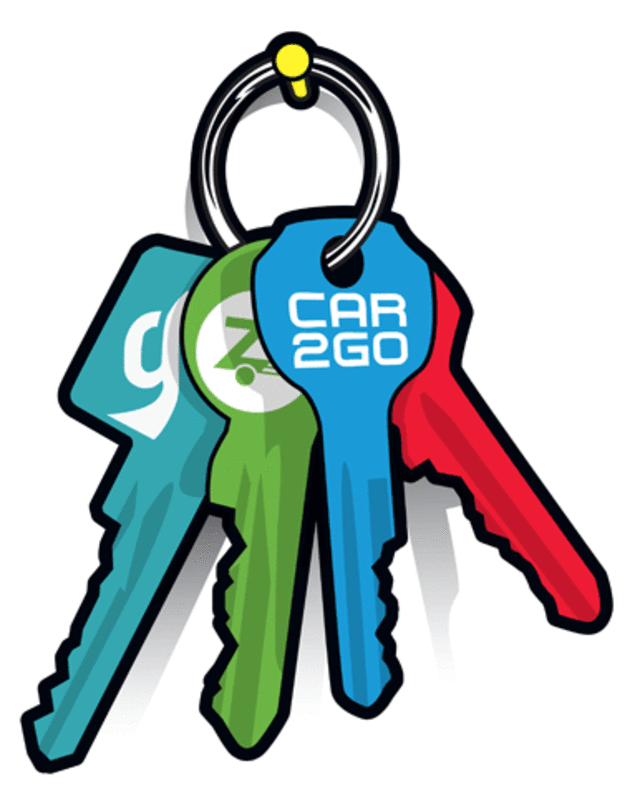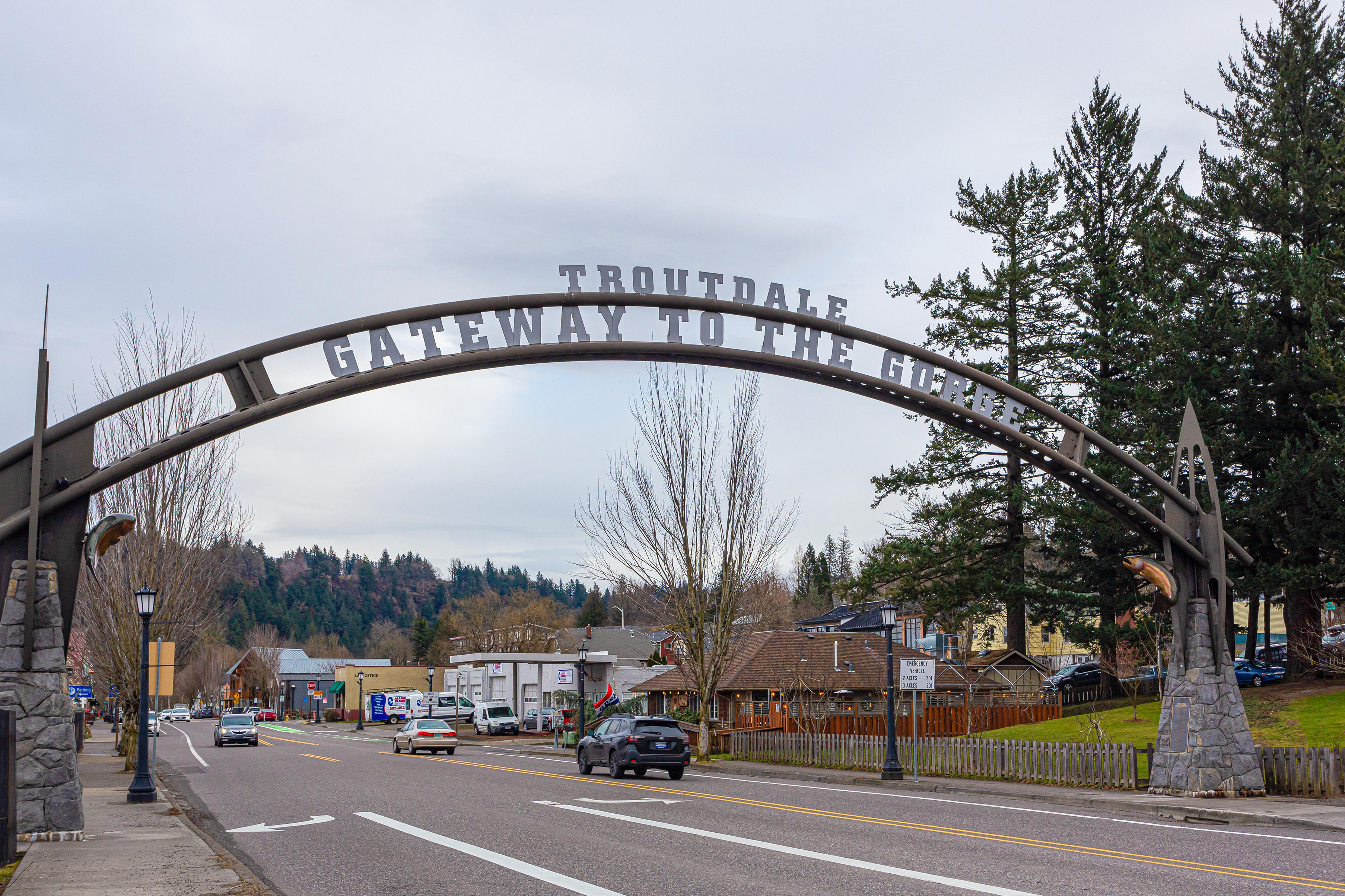The Highs and Lows of Car-Free Living in PDX

You walk your date back to a vehicle that looks more like a case of designer water than a car. Instead of opening the passenger door for her, you fumble for a small plastic card in your wallet, slap it against the windshield, watch a flickering screen, hear the click of the unlocking door—and you still have reach over and unlock her side. The dashboard screen glows a moody blue as the stale strains of Matchbox Twenty’s “3 a.m.” flood the car. All night, you’ve been chatting about obscure indie bands and public radio. “Uh, I didn’t put this station on,” you swear.
Then comes the walk to her door in Northwest. As you turn to leave, “your” car speeds away. A search of an iPhone app’s map of little pictures of similar cars finds the closest substitute a mile away. The last 77 bus left long ago. You trudge through the night to a spot near a darkened warehouse along NW Yeon. By the time you find the car and drive home, just over the Fremont Bridge, it’s been 45 minutes since you bade your date goodnight. At least it’s not raining.
In November 2012, I decided to go “car free.” Particularly in Portland, this is not the radical choice it might once have seemed. Passenger car registrations in Multnomah County dropped 5 percent between 2007 and 2012 despite a surging population, according to Oregon Department of Transportation data. Responses to a Metro survey in 2011 showed that 28 percent of Portlanders walked, biked, or took transit for average weekday trips. In 1994, only 19 percent had. Whole subcultures here devote themselves to living without four wheels.
My new, car-free life also lined up with national trends that show Americans, especially those aged 18–34 (that’s me, barely), driving less. Between 2004 and 2012, the nationwide average of miles driven per person, per year, dropped 7 percent, the US Public Interest Research Group reported last year. “The driving boom of the previous 60 years appears to be over,” says US PIRG analyst Phineas Baxandall. “Cars culturally don’t occupy the same space as they did.”
On a personal level, selling my car didn’t feel too drastic. I already felt like an adjunct member of Portland’s Anti-Autopia. To celebrate my 30th birthday, I biked between food cart pods. Two years ago, I’d talk about transportation wonkery for hours with a UCLA master’s candidate I dated. The next woman I saw was an urban planner who joked about swooning over my multimodal leanings on OK Cupid.
Then, I started working on a book, which meant less time for paying gigs as a writer, and thus plundered my savings. Insuring and fueling a car didn’t make sense given the few pajama-clad steps to my home office. (The average Portland car owner spends roughly $6,500–7,000 a year on maintenance, fuel, insurance, and other expenses.) Car-sharing had blossomed, promising on-demand-mobility. The time had come.
In the year-plus since, I have immersed myself in a collage lifestyle of walking, biking, mass transit, and car-sharing that definitely saves me money. A little, anyway: I used to spend about $211 per month on transportation. Since I sold my car, that’s dipped 32 percent to $144 per month for bike upgrades and maintenance, car shares, and transit fares.
Yet, money aside, my choice also highlights just how important cars remain. Job-hunting, shopping, and dating have all tested my resolve. Last year I went to a jam-packed North Portland bar to meet a first date. It was too crowded, so we decided to go to another bar, just far enough away to require four wheels. Even though we’d exchanged just a few words, I had to ask my date for a ride. When I hunted for an apartment, I obsessed over walkability and transit routes. Just about every time the sun beats through clouds, I want to flee Portland and play in nature, but feel chained to town unless a friend invites me out.
Above all, my “shift,” if you will, has given me sommelier-like appreciation for the nuances, perks, and drawbacks of various ways to navigate Portland. Biking, almost a fetish here for some, is wonderful but, frankly, limited. (Few direct, safe bicycling alternatives exist east of 82nd Avenue, for example.) TriMet’s transit network is a cheap date, but its savings do not fully cover the agita of rate hikes, broken ticket vending machines, service cuts, infrequent bus lines, and limited (at best) late-night options. I definitely can’t commit.
In truth, I’m less “car-free” than “low-car.” Basically unheard of 10 years ago, car-sharing has developed into a consumer cornucopia/minefield, replete with competing options and brands appealing to markedly different needs and preferences. (And Portland doesn’t yet have the fancy ride-on-demand services, like Uber and Lyft, that have shaken up the taxi scene from New York to Seattle.)
Here’s the smorgasbord:
Zipcar
This service, operating more than 200 cars in Portland, has been on the scene since 2007 (and, in other incarnations, since 1998). Members (who pay a $25 application fee and then choose among a number of variously priced plans) reserve cars by the hour, half-day or day, using the company’s website or mobile app to figure out what’s available where. The cars are clean, recent models. A swipe of an ID card unlocks the door. Zipcars come in a variety of sizes and can be found parked near apartments, college campuses, and busy shopping districts. Because Zipcars have to be returned to the same spot after each trip and must be booked for a minimum of an hour, they’re great for errands that involve multiple stops, lugging things, and midday appointments, rather than commutes.
Getaround
If Zipcar is the car-sharing equivalent of Marriott, best-suited to moments when you want to know what you’re getting and are willing to pay for the certainty and stability of a “corporate” experience, Getaround is Airbnb. It’s cool, with a fashionable “sharing economy” ethos and the accompanying lack of predictability. With Getaround, owners list their cars online and set their own price for rentals—yes, you’re driving someone else’s car. Some are beaters, renting for as little as $3 an hour or $15 a day, though it’s easy to find luxury cars at higher rates. Drawback: owners and renters usually have to meet in person to swap keys. Getaround is also best for round trips.
“It’s still sorta Getaround 1.0,” concedes the company’s local adviser, Steve Gutmann.
Some participants have car kits that facilitate automated entry, but owners still have to confirm each rental. (Overall, as with every version of the sharing economy, Getaround leaves the consumer very reliant on his or her peers.) Soon, says Gutmann, the company will roll out an “instant” feature that will automate rentals, something already being tested in San Francisco. Gutmann says cars that are available instantly rent three times as often, translating to “real money” for owners.
“Getaround is just more difficult to use than the other kinds of car-sharing companies,” Gutmann says. “We’re working really hard to bridge that gap right now.”
Car2go
Into said gap, enter the “free-floating” car-sharing service German automaker Daimler launched in Portland in March 2012. Car2go users can rent one of 300 two-seater Smart cars by the minute, then park them almost anywhere within a designated coverage area. Any local member (or members visiting from other Car2go cities) can then rent the cars from that spot. Membership costs an initial $35; drive-time starts at 41 cents a minute. Car2go is convenient for one-way trips—as long as you want to go somewhere within the service’s rather tight boundaries. (The airport, the Nike campus, and Gresham: all beyond reach.) Stories of moments when the supposedly seamless system breaks down, though, are a Car2go rite of passage. On October 30 last year, Car2go’s communication network failed during Portland’s evening rush hour. It wasn’t the first time, nor would it be the last: on January 25, the service’s entire North American system went down, stranding drivers across the continent for hours. Car2go relies on cell towers to connect vehicles with its HQ and thus must count on vendors to keep communications running.
“We’re constantly looking at our own system within the cars and our own back-office system that they communicate with to improve reliability,” says Ken Hills, Car2go’s Portland and Seattle location manager. Many Car2go members also use Zipcar and other services, but I’ve found it’s tough to time bus schedules with cell tower malfunctions, and it doesn’t make much sense to grab a nearby Zipcar to get home if I’ll have to bring it back later.
I’m still working toward feeling the same freedom, convenience, and, in some cases, confidence I felt owning a car. I keep reminding myself that those qualities are in the mind of the beholder, anyway. Scanning for parking places, a breakdown on the way to a job interview, bridge lifts, and gas-price spikes are nearly as frustrating as the challenges of carlessness. My new way of moving has benefits cars can’t offer, too. Biking and walking keep me fit—it’s probably coincidental, but I ran my first two marathons in my first car-free year.
The really fun part? My transportation life has become something like polygamy. Sometimes I’m in the mood for a cute little Car2go that may not go home with me but is fun to hang out with. Other times, I want to drop some extra cash for some quality time with a nice-looking Zipcar. Occasionally, all I need is a friend with benefits: the Getaround next door.
And then, sometimes, I want a longer fling. One three-day weekend I rented a car from Enterprise, went to the coast on Saturday, Bend on Monday, and ran errands the Sunday in between. It was glorious.




